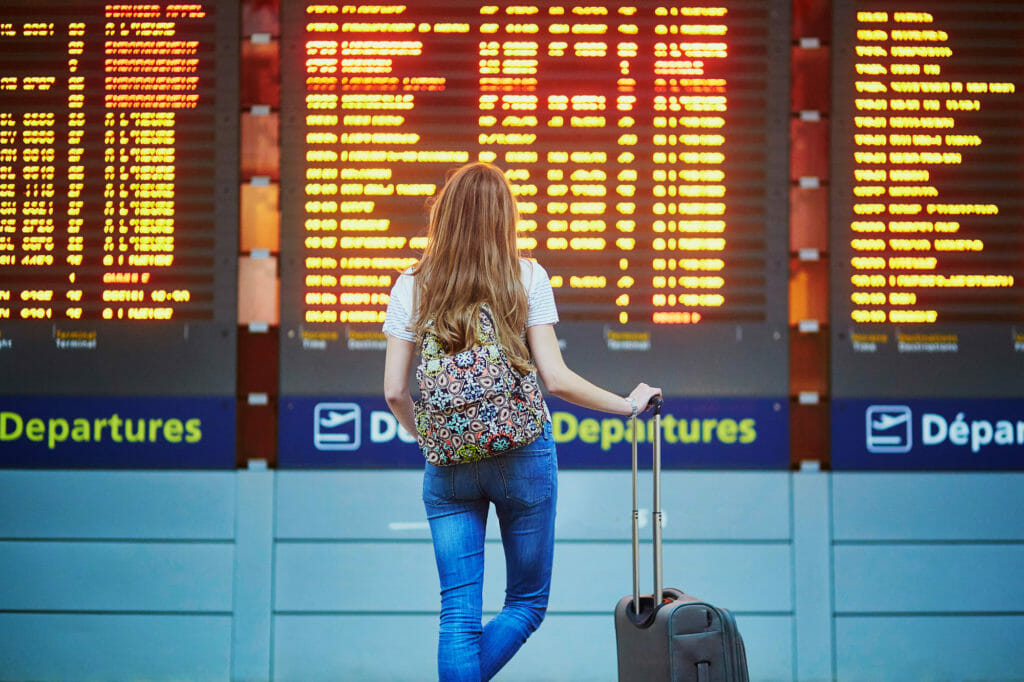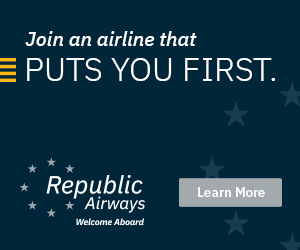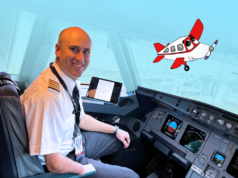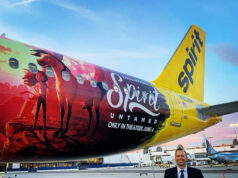 Well, this may not be everything you need to know, but it is the basics, at least. As you interview, consider your options. When you are hired at either an express or mainline airline as a pilot or flight attendant, one of your benefits is the opportunity to non-rev or pass ride. In most cases, your new airline will allow you to travel both domestically and internationally. Obviously, salary, base location, insurance, etc. are vital, but being able to travel to those vacation spots all over the globe is a wonderful benefit.
Well, this may not be everything you need to know, but it is the basics, at least. As you interview, consider your options. When you are hired at either an express or mainline airline as a pilot or flight attendant, one of your benefits is the opportunity to non-rev or pass ride. In most cases, your new airline will allow you to travel both domestically and internationally. Obviously, salary, base location, insurance, etc. are vital, but being able to travel to those vacation spots all over the globe is a wonderful benefit.
Pass riding is a privilege. It’s been many years since I attended or taught a new-hire orientation course, but while many of the rules on etiquette and dress have been amended, one fact remains rock solid; when you are pass riding, you are a representative of your airline. Pass riding is a privilege not an entitlement or right, and should be regarded appropriately. There are very few rules when riding the airline for free (or at greatly reduced rates) but those rules must be respected and observed. I recently had a conversation with one of our chief pilots and asked him about pass riding violations. He told me that his office processes at least one violation per month, which normally results in the employee’s loss of pass privileges. Don’t let that happen to you and your family. Most guidelines are common sense, but each air carrier’s rules and guidelines may differ.
Travel Eligibility. As a pilot or flight attendant, you are eligible for travel. One of the first things you will do as a new employee, and probably each time you travel, is to sign (usually electronically) the airline’s “Authorization and Consent Agreement” which states that you will abide by the airline’s rules and guidelines concerning employee travel. Additional eligible travelers normally includes, retirees, spouses, domestic partners, and qualified children. The rules differ for children, but generally eligible are dependent children up to the age of 19 and dependent children who are students up to age 23. Typically, parents and parents-in-law may be eligible to share your pass benefits. It is essential that you explain the rules and regulations of successful pass riding to your dependents. A few hard and fast rules are:
1. Employee Passes (including companion passes) may not be sold, purchased, or exchanged for goods or services.
2. Eligible pass travelers may not use their privileges for business-related travel.
3. You may not hold a non-revenue pass and a confirmed (paid) ticket for the same flight.
4. Falsifying travel information is a violation of pass policy.
 Companion (Buddy) Passes. Everyone has heard of buddy passes. Many, though not all, airlines offer the employee a set number of travel passes for friends and extended family. If you choose to use your companion passes, make sure your companion knows the rules. It is especially critical that your “buddy” knows that he/she will probably be the last one to board the aircraft. Employees, retirees, spouses, children – well, everyone – will be allowed to board before your companion. Most pass riding violations stem from “buddies” who acted out, and/or didn’t know the rules. Believe me, yelling at a gate agent, or a flight attendant will bring a lot of unwanted attention to you, the employee.
Companion (Buddy) Passes. Everyone has heard of buddy passes. Many, though not all, airlines offer the employee a set number of travel passes for friends and extended family. If you choose to use your companion passes, make sure your companion knows the rules. It is especially critical that your “buddy” knows that he/she will probably be the last one to board the aircraft. Employees, retirees, spouses, children – well, everyone – will be allowed to board before your companion. Most pass riding violations stem from “buddies” who acted out, and/or didn’t know the rules. Believe me, yelling at a gate agent, or a flight attendant will bring a lot of unwanted attention to you, the employee.
List for your flight. Everyone hired at the express or mainline carriers receive a new-hire orientation where (hopefully) the vacation pass riding rules for the airline are covered. Each airline differs on how passes are issued, but most have an online portal which allows the employee to list for the flight on which they intend to travel. This is probably your first step: Check your airline’s employee travel website and determine how the flight is booked. If the flight is booked full, your chances are slim, but therein lies the first rule: Pick a flight, and list. ONCE. At most airlines it is a rule violation to list yourself for multiple flights during the day. It is also unfair to your fellow employees. At my airline, if you are bumped from your first flight, you are rolled over to the next and move ahead of the non-revs listed for that flight. It goes without saying that you must be physically present at the gate for your flight. Each airline differs on how employees are queued for boarding. Date of hire, first come-first served, or time of check in, are all methods used to determine your place in line.
At the Gate. You’ll need a boarding pass to get through security unless you are able to access the Known Crew Member portal. At the gate, please realize that the agents are busy, usually short staffed, and do this job all day, every day. Most will welcome you checking in and letting them know you are in the gate area, ONCE, please only ONCE. Afterward, wait for your name to be called. Hovering around the podium will not help your chances. Please be considerate to both the agents and the paying passengers that make all of this possible. While it won’t help your chances of getting on the flight, it never hurts to carry a few Starbucks gift cards to give an agent who really looks like he/she needs a cup of coffee. (The Starbucks gift cards are also a great thing to carry to give service men/women you see in the airport.)
Employee dress. This is where controversy normally begins. My opinion of conservative dress may not match yours, so the airline has guidelines. Recently, United Airlines received some very negative publicity for refusing to allow two teenage girls to board wearing leggings that did not conform to the airline’s dress code. Absent from the national story was the fact that the two girls were pass riding, and indeed did not meet the dress code. The secret to successful pass riding is to blend in. Gone are the days when non-revs were required to wear a coat and tie, but there are many of us who remember those days. A friend recently told me a story about pass riding on Eastern Airlines (now defunct). He was in Nassau, walking to the airplane after being cleared to board in temperatures above 95°F. He removed his required suit coat but before climbing the stairs to the Boeing 727, the agent told him to please put his coat back on prior to boarding. Yes, those days are gone, but a few general guidelines remain. Most airlines bar wearing swimwear, sleepwear, or underwear as outer wear. A clean, well-groomed and tasteful appearance is a good general rule. There are different requirements when riding in business or first class. If your intended flight has a first class cabin (with a few open seats) it’s a good idea to consider business casual dress. Some airlines allow first class travel in jeans, but many do not. Also, as a pilot or flight attendant, many times you’ll have the option for a jump seat. Dress requirements may differ for jump seat travel.
Onboard the aircraft. After receiving your boarding pass, move as quickly as possible onto the aircraft. Non-revs are normally boarded last so there will be some urgency to board and settle into your seat for that on-time departure. Unfortunately, by the time you do board, the overhead space will likely be taken. Be prepared to have your luggage gate checked. Do not expect the flight attendants to find a place to stow your luggage. Pack lightly (if possible). There is always have the space under the seat. (I know – yeah right.) In today’s technological age, the flight attendants may know where the employees are sitting but not always. If there is a meal served, a very polite, “Do you have enough,” will tip off the flight attendant that you are non-rev. The customers come first.
Introducing yourself to the flight crew. This has recently become a contentious subject within the various airlines’ web boards. Not long ago it was reported that a captain stated, “Please do not stick your head into the cockpit to introduce yourself. I’m busy, and don’t really care.” My first thought would be, That’s a little harsh. Most airlines subscribe to a threat and error management training module. It’s been proven that in a time of emergency an external resource (like a pilot in the back) may be an important asset. My personal rule-of-thumb is this: If I’m qualified on the aircraft I’m boarding, I introduce myself, otherwise I just take my seat.
The opportunities for travel as an airline employee are unparalleled. You and your family should take every vacation trip possible, and see everything imaginable. It doesn’t take long to review your airline’s travel guidelines, and it is a good idea to do so. Remember, pass travel is a privilege, not a right. Smart, courteous behavior will guarantee a long career of great pass riding experiences. ACN
























































There is absolutely zero reason to “check in” with the flight crew while traveling using non-revenue pass privileges. You are confusing non-rev pass riding with jumpseating as a pilot. They are not the same. A standby non-rev pass rider is riding based on the permission of the employer. There is no requirement to check in with the flight crew or captain. Jumpseaters ride at the discretion of the captain and checking in is required.
I guess we’ll have to agree to disagree. The flight crew and airline business is more than rules and requirements, it’s a fraternity. We work and depend on each other. If you fly for an airline that uses a Threat and Error mode of operation, you know that a pass riding pilot can be a valuable external resource in an emergency. Is there a rule requiring me to check in and say hello to the flight deck? No..is it a courteous and possibly a safety related thing to do, Yes. I normally do not say hello to the front end if I’m not qualified on the aircraft but if I’m qualified, I let them know they can count on me. So to finish the comment, you’re right there is no rule.